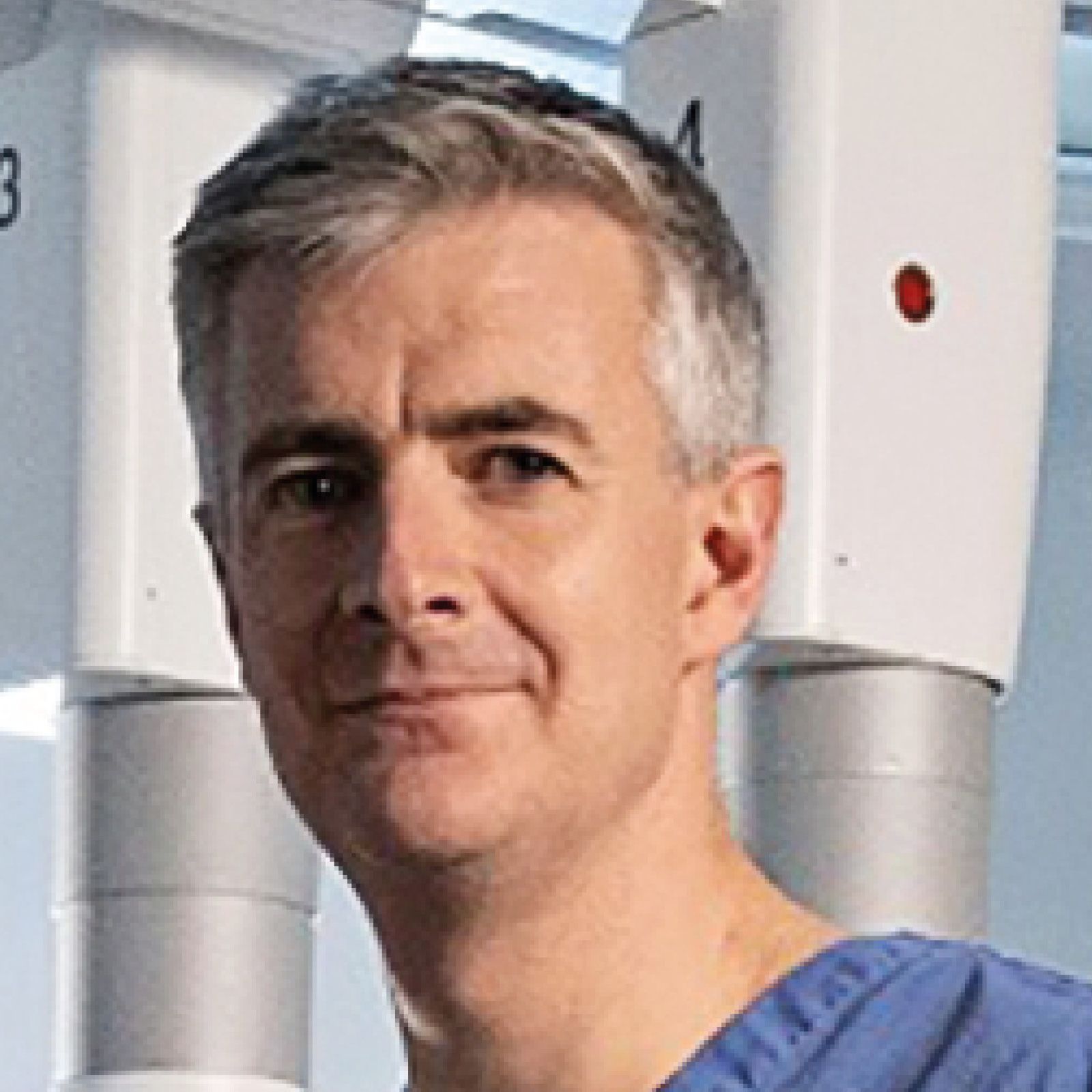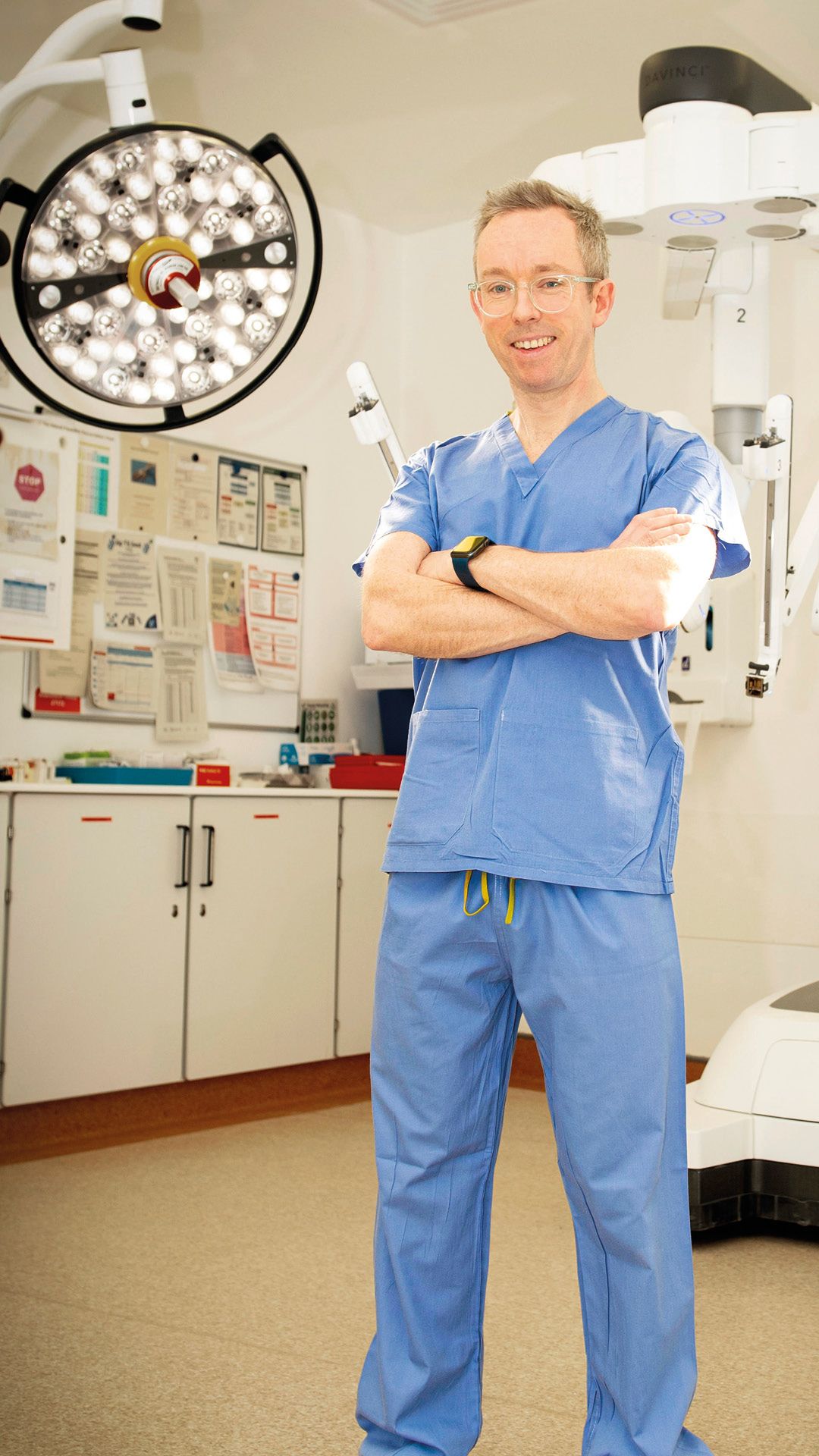We have the technology
The growth of robot-assisted surgery means
improved patient outcomes, finds Campbell Roxburgh


Campbell Roxburgh NHS Research Scotland and Scottish Universities Scottish Senior Clinical Fellow
Robotic surgery is no longer the preserve of major teaching institutions. It now has a valued place in local hospitals. The cost of systems and the need for appropriate volumes for surgeons along with requirements to provide value for money and maximal usage highlight the difficulties of fully embracing robotic assisted surgery (RAS).
No current trainee will come out of a training programme competent to provide independent RAS. This means the need for additional training opportunities such as those provided by the College, NHS Education for Scotland (NES) and Health Education England will be important in providing exposure to robotic surgery. We have the opportunity to provide some of this exposure to enable trainees to embrace the technological advances until RAS becomes more embedded in NHS practice.
Here, Professor Campbell Roxburgh notes the challenging dynamics for training and Christopher Ray details his personal journey from established consultant to fully fledged robotic surgeon.
Intracavity robotic-assisted surgery (RAS) has been present in Scotland for more than 10 years, building a successful national programme of prostate cancer surgery across the country. During this time, the uptake of robotic surgery in other specialties has increased globally, particularly in general surgery and gynaecology, with emerging evidence highlighting improved rates of minimally invasive surgery with reduced conversions to open surgery and associated improved perioperative outcomes.
In the face of these developments in many surgical specialties, there were calls to expand the use of RAS in Scotland.
In February 2020, the NHS Scotland National Planning Board agreed a National Strategic Framework for intracavity RAS in Scotland. This framework outlined ambitions to safely expand multi-specialty use of RAS in Scotland, reducing rates of open surgery and improving equity of access and outcomes for patients. It was proposed that Scotland’s RAS expansion should initially focus on gynaecology-oncology and colorectal surgery, alongside continued progression in urology and thoracic surgery – where RAS was already established – as well as trans-oral robotic surgery. Future progression in other specialties were also proposed.
Systematic growth
In 2020, Scotland hosted five RAS systems across the three cancer networks. Following investment by the Scottish Government and individual NHS boards, additional systems have been acquired to the point where at the start of 2024, there are now 17 RAS systems in Scotland.
The country now offers multi-specialty RAS for urology, colorectal surgery, head and neck surgery, thoracics and gynaecology across all regions. This unprecedented investment in Scottish surgical technology has resulted in considerable expansion in RAS-trained surgeons and theatre staff.
Importantly, there is evidence of early realisation of benefits, with improved perioperative outcomes and reduced hospital stays reported by many sites. Work is ongoing to continue to monitor the progression of the RAS programme and ensure maximal benefits are realised. In addition efforts are underway, led by NES and the Scottish surgical colleges, to deliver a Scottish RAS training pathway.

Transition to robotics
Training can be challenging yet also inspiring
Learning robotic surgery has been the pinnacle of my career. I have always considered my job – with its challenges and strains – a privileged role, and hugely rewarding. My operating day is the highlight of my working week, but the arrival of robotic surgical capability has taken this to a new level of excitement, bringing with it fresh challenges.
As the culmination of two years of campaigning, business case building and collaborative teamwork, NHS Ayrshire & Arran secured funds for the da Vinci Xi system in March 2023. I was supported by a forward-thinking board and management structure, and we took inspiration from the success of similar-scale robotics programmes across Scotland, in large district general hospitals with programmes shared between colorectal, urology and gynaecology surgeons.
As the region’s inaugural colorectal robotic surgeon, I embarked on a summer at the robotic console: 30–40 hours of skills and drills that teach how to translate open surgical movements of the hand into precise, articulated actions delivered through the robotic instruments. A series of live observership days progressed to a surgical ‘wet-lab’ – two days of live practice on an animal model, allowing tissue handling exposure, immediately before the first real operations on patients.
Then it all gets real. An expert robotic surgeon proctor attends the first three to four lists and is essential to the safe delivery of the novel techniques. Even with extensive experience of laparoscopic surgery, I found these lists exhausting, with a significant mental burden. Replicating operations you know inside out, but with this advanced technology, requires parts of the brain you have not previously used. Despite my training, laparoscopic Fellowship and seven years of weekly consultant laparoscopic operating exposure, I found the transition to robotics harder than expected.
Perhaps it is surgical hubris but few openly declare the early phases are challenging. I am happy to confide the early phase of skill acquisition is daunting – particularly after the proctoring phase is complete – and early difficulties are amplified by being the only specialty surgeon on-site utilising the system. Gratefully, I have excellent colleagues who supported the process and a superb theatre and anaesthetic team.
After 10 cases, something magical happens. A tipping point is reached and everything clicks. You find yourself relaxed, sitting at a console with 3D views you never imagined possible, better control and dexterity than you can deliver laparoscopically and unparalleled precision.
We are beginning to see the benefits to patients with reduced post-operative pain, a reduction in the anaesthetic adjuncts and analgesia requirements, and earlier discharge. The future is bringing more colleagues online and supporting training across surgical departments. For trainees, we will bring them actively onto the robotic consoles and help forge clear training pathways for the next generation of surgeons.
Christopher Ray
Consultant Colorectal Surgeon, University Hospital Crosshouse

